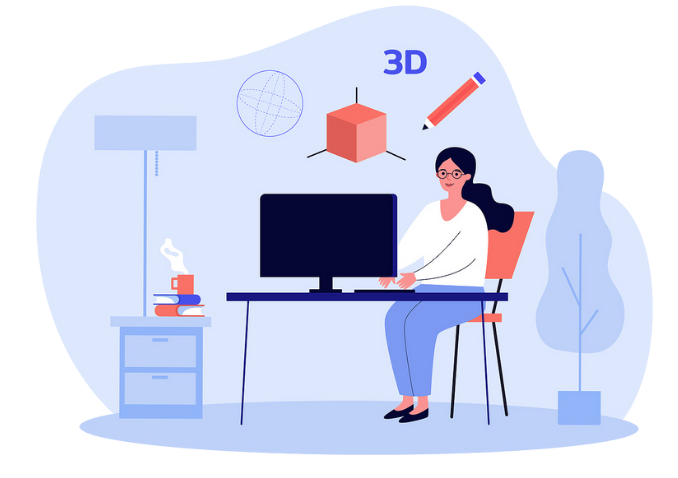Graphic design is an ever-evolving field that marries creativity with functionality. But what does it genuinely entail to become a successful Graphic Designer? Delve into our curated list of the most recent job openings from esteemed media and creative organizations. These listings not only offer a window into the current market demand but also provide a comprehensive overview of the qualifications and expertise sought by top employers.
Beyond the artistic flair, a Graphic Designer’s role encompasses many responsibilities, from visual storytelling to brand identity creation. As the digital landscape continues to shift, so do the expectations and requirements of this dynamic profession. Read on to gain deeper insights into what a Graphic Design job entails and how you can best position yourself in this competitive industry.

What does a Graphic Designer do?
At its core, a Graphic Designer is an artisan of the digital age, weaving together visuals that shape a company’s identity. Their canvas can range from the digital realm of website layouts to tangible materials like brochures and magazines.
- Website Layout: A company’s online presence is paramount in today’s digital age. A Graphic Designer crafts the user interface of websites, ensuring seamless navigation and an engaging user experience.
- Ads: In the competitive world of marketing, standing out is crucial. Through compelling advertisements, Graphic Designers aim to grab attention and invoke curiosity.
- Brochures & Magazines: These tactile materials serve as a bridge between the company and its audience. Through well-structured layouts and captivating visuals, designers appealingly convey information.
- Corporate Logos: Perhaps one of the most vital tasks, designing a corporate logo means encapsulating a company’s essence in a single emblem. It becomes the face of the brand, recognized globally.
- Reports: Beyond the numbers and data, presenting info in a visually digestible format is essential. Here, designers play a role in making complex information accessible and understandable.
Graphic Designers serve as the visual voice of a company, ensuring that every visual touchpoint resonates with the brand’s ethos. While many operate as generalists, spanning multiple areas, others delve deep, specializing in niches like digital artistry, branding strategy, or advertising campaigns.
What are the responsibilities of a Graphic Designer?
A Graphic Designer’s role goes beyond just crafting visuals; they are storytellers and brand guardians. Their creations are not merely about aesthetics but are strategic tools driving engagement and brand recognition.
- Collaboration: Often, they collaborate with marketing teams, copywriters, and other stakeholders to ensure that the visual narrative complements the written word.
- Brand Consistency: As the custodians of a company’s visual identity, they ensure that every piece, from business cards to billboards, resonates with the brand’s essence. This includes maintaining consistency in colors, fonts, and overall design aesthetics.
- Creative Direction: Beyond individual designs, Graphic Designers often steer the overarching creative vision, guiding teams and ensuring alignment with the brand’s goals.
What are the requirements to become a Graphic Designer?
Entering the realm of graphic design is both about formal education and showcasing one’s innate creativity.
- Educational Background: While many positions do prefer candidates with a Bachelor’s degree in Graphic Design or a related field, the landscape is shifting. Today, skills often outweigh traditional educational pathways.
- Technical Proficiency: Mastery over graphic design software like Adobe Creative Suite is a given. With the digital landscape evolving, familiarity with web design tools and platforms is also beneficial.
- Portfolio: More than degrees or certificates, a robust portfolio showcases a designer’s versatility, creativity, and problem-solving approach. It’s a testament to their skills and their journey in the design world.
- Brand Understanding: A keen sense of brand identity is indispensable. Designers must immerse themselves in the brand’s world, understanding its ethos, audience, and objectives.
In graphic design, it’s about creating visuals and weaving stories, shaping perceptions, and forging connections.
Leveraging Resources for Optimal Designs:
In the dynamic world of graphic design, resources play a pivotal role in ensuring designs remain fresh, relevant, and ahead of the curve. Designers often tap into vast online libraries like Behance, Dribbble, and Adobe Stock for inspiration. These platforms host a plethora of designs from global artists, providing a window into current trends, innovative techniques, and diverse styles. But it’s not just about visual inspirations; tools like color palette generators, typography databases, and mockup templates can significantly streamline the design process. Moreover, embracing the community aspect, many designers turn to forums and groups to share, critique, and brainstorm ideas, fostering a culture of collaborative growth.
Commitment to Continuous Learning:
The design landscape is in perpetual flux, with new tools, techniques, and trends emerging regularly. For Graphic Designers, staying static is not an option. Continuous learning is integral, whether through online courses, workshops, or webinars. Platforms like Udemy, Coursera, and LinkedIn Learning offer courses ranging from the basics to advanced intricacies of design software. But beyond the technical, understanding the psychology of design, user behavior, and cultural influences can elevate a designer’s work from good to exceptional. Attending design conferences, subscribing to design magazines, and following influential designers on Instagram and other platforms can also provide invaluable insights and keep one’s skills razor-sharp.
